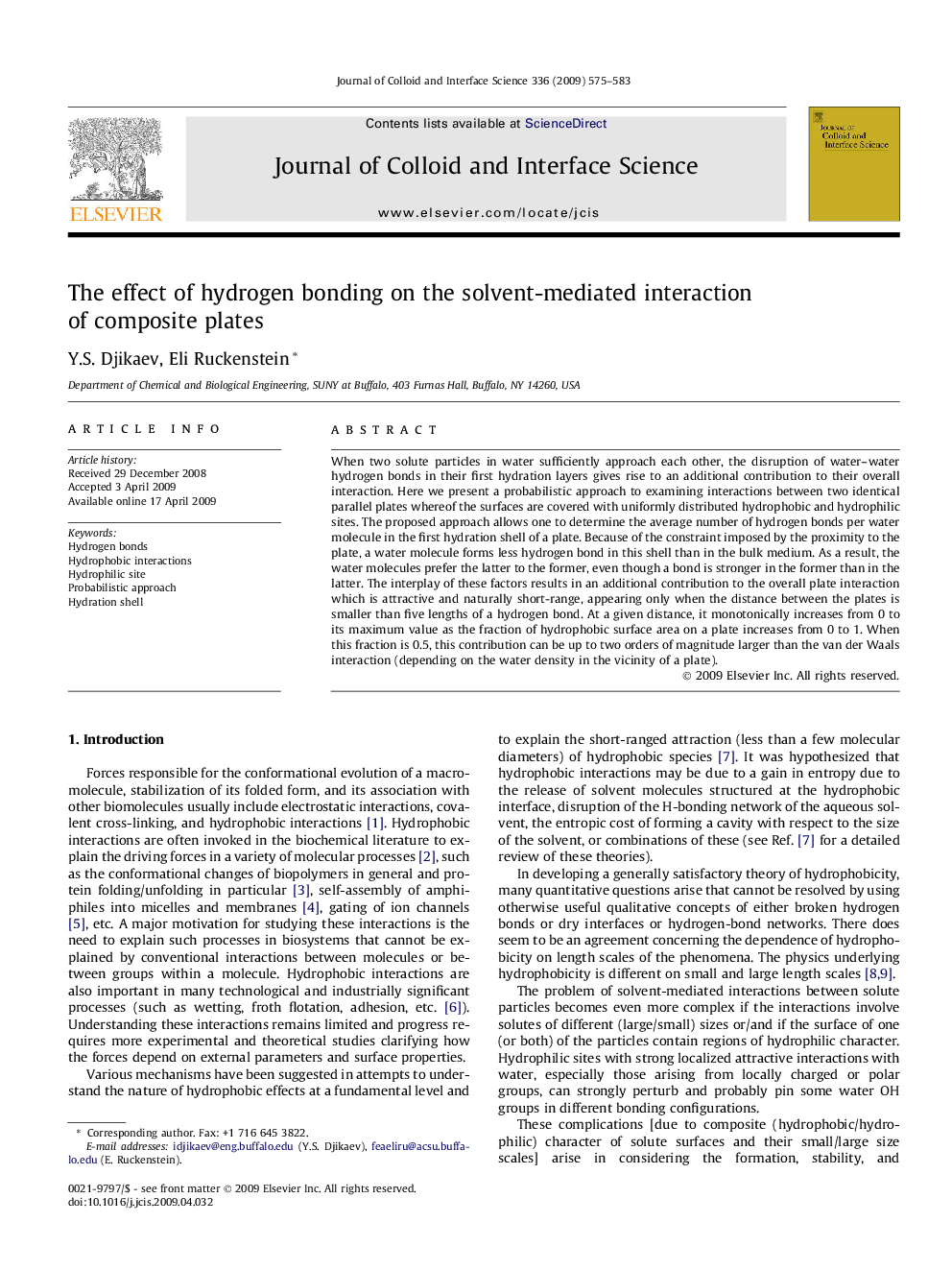| Article ID | Journal | Published Year | Pages | File Type |
|---|---|---|---|---|
| 610164 | Journal of Colloid and Interface Science | 2009 | 9 Pages |
When two solute particles in water sufficiently approach each other, the disruption of water–water hydrogen bonds in their first hydration layers gives rise to an additional contribution to their overall interaction. Here we present a probabilistic approach to examining interactions between two identical parallel plates whereof the surfaces are covered with uniformly distributed hydrophobic and hydrophilic sites. The proposed approach allows one to determine the average number of hydrogen bonds per water molecule in the first hydration shell of a plate. Because of the constraint imposed by the proximity to the plate, a water molecule forms less hydrogen bond in this shell than in the bulk medium. As a result, the water molecules prefer the latter to the former, even though a bond is stronger in the former than in the latter. The interplay of these factors results in an additional contribution to the overall plate interaction which is attractive and naturally short-range, appearing only when the distance between the plates is smaller than five lengths of a hydrogen bond. At a given distance, it monotonically increases from 0 to its maximum value as the fraction of hydrophobic surface area on a plate increases from 0 to 1. When this fraction is 0.5, this contribution can be up to two orders of magnitude larger than the van der Waals interaction (depending on the water density in the vicinity of a plate).
Graphical abstractWe propose a probabilistic approach to examining the effect of disruption of hydrogen bond networks around two identical parallel plates of composite (hydrophobic/hydrophilic) nature on their interaction in water.Figure optionsDownload full-size imageDownload as PowerPoint slide
